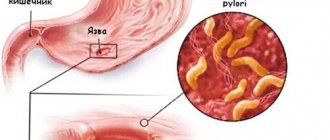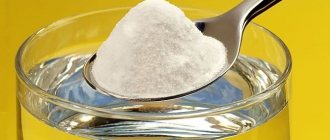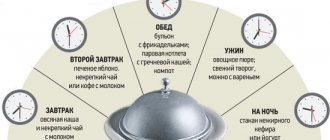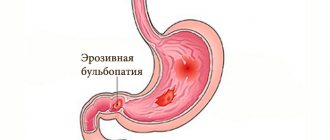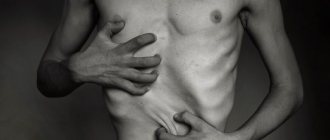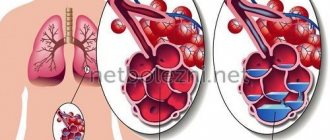Symptoms of heartburn and its consequences
The main symptoms of heartburn:
- burning in the area of the projection of the stomach and higher up the esophagus;
- feeling of fullness over the epigastrium;
- a feeling of bitterness and acidity in the mouth;
- appetite disorders;
- increased discomfort when bending over and lying down.
Attention! A retrosternal burning sensation may be a sign of serious heart problems. The main difference in differential diagnosis is the time of onset of symptoms: heartburn manifests itself on an empty stomach or immediately after a heavy meal, cardiac reactions are not tied to food intake.
Important! “Harmless” heartburn can cause serious health problems! If it is not eliminated, chronic GERD develops, which over time leads to the development of the following pathologies:
- reflux esophagitis;
- peptic ulcer of the esophagus;
- strictures of the esophagus with a sharp narrowing of its lumen and conduction disturbances - dysphagia;
- precancerous condition of the esophagus (Barrett's esophagus);
- esophageal adenocarcinoma.
Heartburn and stomach pain
Almost all of the above conditions or diseases, with minor differences, can cause heartburn and stomach pain; let’s look at them in more detail:
- chronic hyperacid gastritis
is always accompanied by persistent heartburn, which appears as a result of the reflux of gastric juice containing acid into the esophagus, irritating and inflaming its mucous membrane. In some cases, heartburn can be the equivalent of pain that occurs one and a half to two hours after eating;
- duodenitis
– pain is felt constantly, but is especially intensified after eating when there are “errors” in the diet; heartburn is their faithful companion. However, pain gradually decreases, but heartburn and bloating remain and, of course, negatively affect the quality of life;
- chronic cholecystitis
characterized by a combination of heartburn and pain in the right upper part of the stomach. As a rule, they occur after eating fatty foods or shaking while driving a vehicle;
- peptic ulcer.
Heartburn and stomach pain may also indicate this disease;
- hiatal hernia.
In this case, pain appears when a person takes a horizontal position or when bending over. It is localized in the stomach and can radiate to the heart or back and be accompanied by heartburn, but the pain goes away as soon as the person assumes an upright position;
- GERD
also accompanied by pain in the upper part of the stomach and heartburn;
- pregnancy.
A companion to this condition can be gastritis with high acidity, accompanied by all the characteristic symptoms;
- digestive disorders.
Most often, causeless pain in the stomach, accompanied by heartburn, belching, and sometimes nausea, is the lot of young people. They can be caused by impaired contraction of the walls of the gallbladder, intestines or stomach, as well as the production of excess acid.
Diagnosis of heartburn
It is very easy to diagnose the presence of heartburn; it is much more difficult to establish the cause of this pathology. To do this, use a wide range of instrumental techniques:
- X-ray with contrast – records the main disorders of the structure of the esophagus – narrowings, diverticula, hernias;
- radioisotope examination of the esophagus (scintigraphy) – effectively detects hernias, protrusions, tumors;
- MRI of the esophagus, stomach - well reflects the structure of soft tissues, forming a three-dimensional image of the organ, registers the slightest changes in the structure;
- endoscopy of the esophagus, stomach, duodenum, or fibroesophagogastroduodenoscopy (EGD) using a long tube with an optical tip - makes it possible to visually examine the structure of the internal walls and assess the degree of damage, as well as measure the acidity of the contents and take a tissue biopsy;
- esophagomanometry – measurement of the contractile activity of the esophagus, coordination of its peristalsis with the work of higher organs;
- daily pH-metry – 24-hour monitoring of changes in acidity in the upper gastrointestinal tract;
- impedancemetry - study of esophageal peristalsis; carried out using a probe with electrodes that measure the difference in resistance (impedance) as liquids, pieces of food, and gas structures pass through the esophagus;
- Ultrasound of the stomach, duodenum, liver, pancreas - evaluates the structure and functioning of organs in dynamics.
What to do if you have severe heartburn?
Home remedies are definitely a good thing. But what to do when severe heartburn “attacks” precisely at that moment, when there is not enough time to prepare infusions and decoctions, you won’t be able to see a doctor urgently, but you need relief right now?
Pharmaceutical drugs called antacids will come to the rescue::
- Rennie,
- Phosphalugel,
- Almagel,
- Gaviscon,
- Maalox and other drugs.
But we should not forget about their side effects: constipation, diarrhea and other unpleasant consequences. In addition, they flush calcium from the body.
Therefore, we strongly recommend not to self-medicate frequent heartburn. It is better to consult a doctor, undergo a detailed examination and carry out the correct treatment.
How to get rid of heartburn
It is important to remember that heartburn is just a symptom; it is useless to treat it separately from the cause. At a minimum, cardiac sphincter insufficiency should be corrected to prevent reflux of gastric contents. To do this you need:
- adjust weight;
- change your diet
- increase the tone of the gastrointestinal sphincters.
All this implies a major lifestyle change. The patient is prescribed a course of medications, a therapeutic diet is selected, exercise therapy and moderate physical activity are prescribed.
Drug treatment of heartburn :
- prokinetics – improve motility of the muscles of the gastrointestinal tract;
- proton pump inhibitors - reduce the secretion of hydrochloric acid and reduce the acidity of gastric juice;
- antacid and enveloping drugs – neutralize the effect of acids, create a protective barrier on the surface of the walls of the esophagus;
- antihistamines – eliminate active inflammation in gastritis and ulcers.
A course of therapeutic nutrition is prescribed by a doctor, taking into account the individual characteristics and needs of the body. The diet is based on diets No. 1 and No. 5. Their general principles:
- fractional meals every 2.5 - 3.5 hours;
- the products are crushed and boiled (or steamed);
- the amount of salt, refined sugars, marinades, canned foods, sweets is reduced to a minimum;
- all food is consumed only warm;
- remove from the diet fresh sour vegetables, fruits, berries (apples are eaten baked), cabbage, legumes, mushrooms, baked goods, concentrated meat and fish broths, carbonated and strong drinks;
- increase the consumption of dairy products, eggs, lean meat and fish, vegetable oils, boiled vegetables (potatoes, carrots, beets, pumpkin, zucchini, etc.), buckwheat, semolina, rice cereals;
- Jelly and compotes made from fruits and berries (rose hips, currants, rowan berries, etc.), as well as herbal teas, are used as drinks.
When creating a menu, you should take into account the body’s need for vitamins and minerals - food should not be monotonous.
Physical therapy is an important part of therapy for heartburn and GERD. It helps strengthen muscle walls, stabilize the sphincter and significantly speed up the patient’s recovery. Features:
- training is carried out only on an empty stomach;
- Excessive loads and intense exercises – running, aerobics – are contraindicated;
- preference is given to calm exercises in which the body maintains an even position - yoga, race walking, skating, cycling;
- Training in a lying position is undesirable.
During exercise, you should monitor the replenishment of fluid in the body.
The practice of breathing exercises deserves special attention. When performed correctly, it reduces the pain of symptoms, reduces intra-abdominal pressure and stimulates peristalsis.
Surgery
In advanced cases, when scarring of ulcers and erosions of the esophagus leads to the formation of strictures and narrowing of the lumen, surgical intervention is resorted to. Both invasive and modern minimally invasive techniques are used. The majority of manipulations are performed under endoscope control without tissue incision. Techniques:
- injections of volume-forming drugs into the sphincter area to narrow the natural lumen;
- expansion of the esophagus with hydrogel implants simulating living tissue;
- endoluminal gastroplasty with the formation of additional folds that limit the opening of the sphincter;
- laparoscopic fundoplication – the formation of a reinforcing “cuff” around the lower part of the esophagus from the patient’s own tissues;
- radiofrequency ablation – artificial microscarring of the walls of the esophagus to eliminate narrowing of the lumen due to tissue damage;
- installation of a magnetic device to restore the closing function of the sphincter.
Causes of heartburn in the throat
Burning and discomfort in the throat can occur in completely healthy people. The most common cause of such symptoms is errors in diet: abuse of spicy or salty foods, caffeine-containing drinks, which cause an increase in the production of hydrochloric acid, causing it to be thrown into the throat. Heartburn can also be caused by smoking and frequent alcohol consumption. A burning sensation is often observed in pregnant women, especially in the second and third trimesters, which is associated with an increase in intra-abdominal pressure and a reflex opening of the cardiac sphincter.
Laryngopharyngeal reflux (LPR)
The backflow of aggressive stomach contents into the cavity of the pharynx and larynx is the main cause of heartburn in the throat. The mechanism of the disease is associated with uncoordinated work of the upper and lower sphincters of the esophagus with constant relaxation of the sphincters of the hypopharynx. As a result of regurgitation (backflow) of liquid contents with a pH below 4, the mucous membrane of the throat is irritated. An important role in the progression of laryngopharyngeal reflux is played by disruption of the reflex reactions of the larynx to an irritant.
The clinical picture of LPR is characterized by a combination of heartburn and nonspecific respiratory complaints: episodic dry cough, mucous discharge from the oropharynx, increased production of saliva. Sometimes the sensation is described by patients as a squeezing “lump in the throat.” An important sign of the disorder is the aggravation of unpleasant symptoms in a horizontal position, due to the entry of more gastric juice into the upper respiratory tract.
Disorders of the acid-producing function of the stomach
The appearance of heartburn can be caused by increased production of hydrochloric acid by the lining cells of the body of the stomach, which provokes the opening of the cardiac sphincter and the reflux of chyme (liquid, partially digested food) into the pharynx. Often the symptom is combined with burning and soreness behind the sternum. A discomfort in the throat also develops due to decreased acid production and stagnation of chyme. In this case, the unpleasant sensations are potentiated by organic acids, which are produced in large quantities during the decomposition of food in the stomach. Typically a burning sensation in the throat is caused by:
- Gastritis
. At the initial stages of mucosal inflammation caused by exposure to bacterial flora, the production of hydrochloric acid increases significantly. A decrease in the pH of gastric juice in combination with uncoordinated contractions of the sphincters leads to the reflux of contents into the overlying sections of the gastrointestinal tract with a feeling of heartburn in the throat. The disease is also manifested by sour belching, constipation and epigastric pain. - Peptic ulcer disease
. The formation of an ulcerative defect in the mucosa, caused by an increase in aggressive factors and a decrease in protective factors, always occurs with pronounced dyspeptic disorders. With a gastric ulcer, heartburn is caused by impaired motility and gaping of the cardiac sphincter. With duodenal ulcers, duodenal-gastric reflux is observed, against the background of which the mucous membrane of the throat is irritated by duodenal contents. - Gastrinoma
. A gastrin-producing tumor located in the pancreas or antrum of the stomach provokes an uncontrolled increase in the secretion of hydrochloric acid, which does not depend on food intake. In this case, sour belching, heartburn in the throat and burning behind the sternum, severe pain in the epigastric region are determined. The condition is aggravated by the addition of steatorrhea, which develops when food is malabsorbed. - Pyloric stenosis
. The transition between the stomach and duodenum is often narrowed due to cicatricial processes in the pylorus, which is accompanied by inhibition of hydrochloric acid production and causes prolonged stagnation of partially digested food masses. As a result, macromolecules decompose with the formation of organic acids. Stretching the gastric wall triggers reverse peristalsis and promotes acid reflux into the pharynx. - Atrophic gastritis
. The disease is of an autoimmune nature or occurs in the late stages of bacterial gastritis, when the lining cells of the mucous membrane are completely destroyed. Heartburn is associated with increased formation of lactic and pyruvic acids due to decomposition and putrefaction of undigested food. The burning sensation is combined with rotten belching, vomiting of eaten food, alternating constipation and diarrhea.
Other diseases of the digestive system
The feeling of heartburn in the throat often indicates diseases of the underlying parts of the digestive system. Burning and pain in the laryngopharynx are sometimes detected with irritation and erosion of the mucous membrane due to the ingress of small intestinal contents with a large amount of bile acids. Secondary disorders of the motor function of the smooth muscles of the gastrointestinal tract and incoordination of the gastric sphincters aggravate the symptoms. The main causes of heartburn are:
- Duodenitis
. Dyspeptic disorders, along with pain, are the main signs of inflammation of the duodenum. A burning sensation in the throat occurs due to the irritating effect of hydrochloric acid and bile acids on the mucous membrane of the pharynx. Unpleasant sensations are combined with nausea and vomiting, a tendency to unstable stools, and bitter belching. The cholecyst-like form of the disorder occurs as biliary colic. - Enzyme deficiency
. Heartburn with a decrease in exocrine pancreatic function is a sign of exacerbation of chronic pancreatitis and gastrointestinal motility disorders caused by duodenogastric reflux. Characteristic signs are steatorrhea and lientorrhea - the discharge of loose, grayish stool with undigested food debris. Malabsorption leads to rapid weight loss. - Perisplenitis
. Heartburn due to inflammation of the spleen capsule usually has a neuro-reflex nature and is caused by impaired gastric motility. The symptom is accompanied by burning pain in the left hypochondrium, which radiates to the scapula, left arm and cardiac region. A typical combination of pain with an increase in body temperature and signs of general intoxication of the body. Unpleasant manifestations intensify with physical activity, coughing, sneezing. - Adductor loop syndrome
. Frequent episodes of stagnation of digested food in the blind part of the intestine in diseases of the operated stomach lead to distension of the intestine and its throwing back into the stomach. The smooth muscles of the gastric wall reflexively contract, then aggressive chyme enters the esophagus and pharynx. In addition to burning sensations in the throat, vomiting after eating, a feeling of heaviness and fullness in the epigastrium, and weight loss are possible.
Neurological diseases
Dyspeptic disorders in pathologies of the central nervous system are often provoked by dysregulation of the autonomic innervation of the abdominal organs. Symptoms such as heartburn, nausea, and abdominal pain are usually signs of visceral paroxysms. Unpleasant sensations from the gastrointestinal tract are often combined with other types of autonomic reactions: pallor, increased sweating, rapid heartbeat. A burning sensation in the throat area is caused by:
- Temporal lobe epilepsy
. Heartburn and other dyspeptic disorders arise due to the involvement in the pathological process of the autonomic centers responsible for the innervation of internal organs. These symptoms manifest themselves both as individual somatosensory paroxysms and as an “aura” before a typical epileptic attack. Over time, epilepsy leads to emotional and intellectual impairment. - Alcoholic encephalopathy
. Burning sensation, discomfort in the throat, nausea and vomiting, and bowel movements are warning signs of the disease. They are associated with the local and general toxic effects of ethanol and its metabolites. The full clinical picture of the disease is characterized by visual and auditory hallucinations, alternating periods of chaotic excitation and depression of the central nervous system. In severe cases, brain dysfunction develops into psychoorganic syndrome and dementia.
Itsenko-Cushing's disease
Heartburn with overproduction of adrenal hormones is formed due to increased production of gastrin and hydrochloric acid in the stomach. A decrease in the acidity of gastric juice and impaired motility of the upper parts of the digestive tract cause the flow of acidic contents into the laryngopharynx. In addition to dyspepsia, in Itsenko-Cushing's disease, pathognomonic signs of the pathology are determined: Cushingoid appearance (significant fat deposits in the torso area, moon-shaped face), purple stretch marks (skin stretch marks) on the thighs and abdomen, cardiovascular pathology.
Viral infections
The combination of dyspeptic disorders with respiratory symptoms is characteristic of measles in young children. Periodic reflux of gastric chyme is associated with functional disorders of gastrointestinal motility due to general intoxication and the specific action of the pathogen. Heartburn in the throat is a secondary nonspecific symptom that occurs against the background of the main manifestations: lacrimation, serous rhinitis, dry cough. The destruction of the epithelial layer under the influence of viral particles aggravates the burning sensation in the laryngopharynx.
Preventing heartburn
To avoid heartburn, you should carefully take care of the health of your entire digestive system. Anyone who is predisposed to high stomach acidity should adhere to the following rules:
- Adjust your diet - do not overeat, give up harmful acid-forming foods - refined sweets, fried foods, smoked foods, marinades, hot and spicy dishes. The last meal should be 4 hours before going to bed.
- Adjust the body's water balance - drink 1.5-2.5 liters of pure still water per day.
- Maintain correct posture - in a “crouched” position, the stomach is compressed and the cardiac valve automatically opens slightly.
- Watch your weight - it should not go beyond the norm, otherwise the likelihood of heartburn increases many times over.
- Get rid of bad habits - quit smoking, limit your alcohol consumption.
- Take medications strictly according to indications, following the dosage and rules of administration.
- Avoid sudden physical activity.
- Try not to tighten the epigastric area with tight, tight clothing and belts.
Tips for heartburn
If the problem cannot be avoided, it is necessary to undergo a clinical examination as soon as possible to identify the cause of the pathology - perhaps everything is much more serious than you think. To temporarily eliminate or smooth out unpleasant symptoms, you can use the following tips:
- drink more water - it will dilute gastric juices, reduce acidity levels and reduce irritation of the mucous walls;
- if there is constant irritation, use antacid and enveloping drugs - they will protect the mucous membranes of the esophagus and sphincter from the action of acids;
- as a last resort, use antifoam drugs to reduce gas formation in the stomach and severe acid reflux with belching;
- review your diet and eliminate all irritating ingredients - spices, marinades, sour fruits, fried foods, limit the amount of sweets, coffee, alcohol;
- Raise the head of your bed by 10-15 cm - this will avoid severe reflux during sleep.
Should you use baking soda? Soda is a component of many pharmaceutical antifoam products and is the main remedy for heartburn at home. The chemical reaction of soda with the contents of the stomach really helps to neutralize high acidity. Due to the reaction of acid + alkali, water, sodium salt and carbon dioxide are formed that are harmless to the body. However, this remedy is only a temporary measure - with prolonged use, carbon dioxide begins to irritate the inner walls of the stomach, provoking it to more actively produce hydrochloric acid.
An alternative to soda solution are mild antacids and alginates or herbal infusion. Flaxseed, chamomile flowers, St. John's wort, and plantain seeds have a pronounced therapeutic effect.
Triggers for heartburn
- Food in large quantities, especially fatty foods.
- Overweight.
- Rest in a horizontal position after eating.
- Smoking.
- Alcohol.
- Soda drinks.
- Mint.
- Chocolate.
- Strong coffee and tea.
- Medicines to lower blood pressure and relax smooth muscles.

